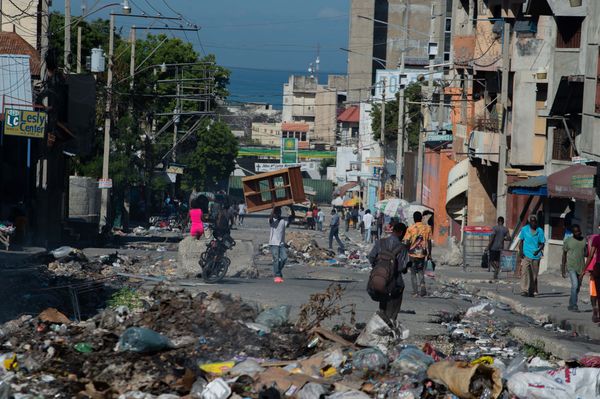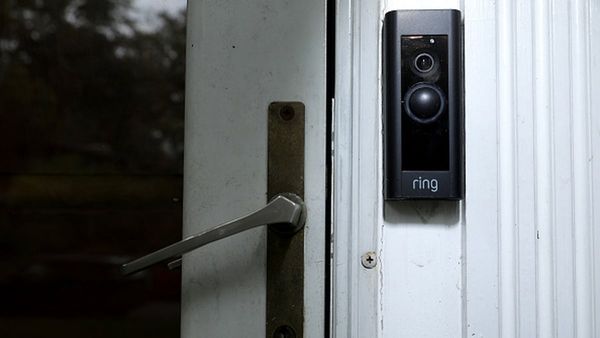
In sunnier times our great capital city regarded itself as a model for the country that it was, sometimes reluctantly, attached to. Go back 25 years and London was booming: a global centre of finance and the knowledge economy, sucking people in from the rest of the UK and abroad as the population bounced back from a low of 6.6 million in 1981, on the way to today’s nine million.
It had some of the problems typical of any major metropolitan centre, but starting in the 2000s London schools — driven partly by migrant ambition — began out-performing the rest of the country, its globally rated universities expanded fast, serious national politicians vied to occupy its newly empowered mayor’s office and the skyline was transformed by visionary architects.
Nowhere was the London turnaround better symbolised than by Islington, home to Tony Blair before he moved to No 10 in 1997. In the 1970s Islington was still considered a borderline slum area. When Sainsbury’s built its supermarket near Angel in the early 1980s, it demanded a car park so that richer customers could drive in from outside the area to shop.
See also: London has an illegal migration problem — but the government is telling us not to talk about it
When I moved there in the 1990s it had become a by-word for gentrification. At the same time, Islington’s famous football club, Arsenal, was being transformed by a Frenchman, a symbol of the internationalisation of the new Premier League in which London clubs have always played a disproportionate role.
London was driving the national economy and was regarded by most of the political and media class as a beacon of openness and opportunity for the rest of the country.
How times change. When it was recently estimated, in a report by Professor Matt Goodwin, that the white British population will become a minority in the UK in 2060, I heard nobody saying “rapid demographic change is nothing to worry about, just look at London”.
How many illegal immigrants live in the capital?
London’s illegal immigrant population could be as high as 500,000, assuming a national figure of just over 1 million, and many of the 160,000 people, mainly young men, who have crossed the Channel on boats since 2018 are now Londoners
The capital has been majority minority since the mid-2000s and the white British proportion, still about 85 per cent in 1980, is now less than one third. In Greater London’s schools only one in five children are white British.
That degree of demographic transformation inevitably takes its toll. Unless you are either pretty affluent, recently arrived from somewhere much poorer or live in an ethnic core (like Bangladeshis in Tower Hamlets), London’s quality of life leaves much to be desired.
Like many big cities it is a place of high prices and low trust; low level crime and disorder abound (shoplifting and fare evasion on the Tube have increased sharply in recent years); housing is expensive and home ownership has fallen 20 per cent since 1991; and few people want to have babies here (London has the lowest fertility of any UK region).
An increasingly divided city
Relentlessly high immigration is not responsible for all these ills, most of which afflict the rest of the country too, but nor is it entirely blameless. Moreover, 20 years ago London migrants were generally high contribution French or German bankers, or Polish plumbers — today they are more likely to be young food delivery drivers from outside Europe (when the Home Office made spot checks in 2023 it found two out of five were working illegally) or minimum wage care workers.
London’s illegal immigrant population could be as high as 500,000, assuming a national figure of just over 1 million, and many of the 160,000 people, mainly young men, who have crossed the Channel on boats since 2018 are now Londoners. Hillingdon and Hounslow have a particularly high share. The capital is not as ethnically segregated as some other majority minority places in Britain, such as Leicester or Luton, nor is it a model of integration. Many parts of the capital would fail my integration “bus stop” test — can you share a joke at a bus stop with a stranger from a different ethnicity about something you have both heard on national media? — given the fact that 40 per cent of Londoners are foreign born and nearly 25 per cent do not have English as their first language.
London’s Gaza battles are a sign of things to come as diasporas fight it out on our streets
London’s Gaza battles are a sign of things to come as diasporas fight it out on our streets. And the capital will be increasingly divided between a secular, liberal, affluent professional class and increasingly religious ethnic minorities. Around 16 per cent of Londoners are Muslim and politics in several boroughs is already dominated by sectarian Muslim allegiances. The tourists have not yet been driven away by unpunished street crime, but London is in danger of trashing its own brand. Consider the iconic black cab with the driver’s deep knowledge of the city. Uber introduced some welcome competition, but should the great institution of the black cab be allowed to die?
See also: London’s crime hotspots as criminal activity rises
What has happened in London, and similar cities, is one factor behind the great shift in what drives Western politics from metropolitan openness to provincial insecurity. Populists do not like metropolitan centres, which they accuse of hoarding too much wealth and power and forcing progressive laws on conservative provincials. Levelling up the rest of the country, if necessary at London’s expense, is a popular idea that remains to be properly pursued.
Pierre Vermeren, the French historian, calculates that the top 12 French cities account for 25 per cent of the country’s population but 60 per cent of GDP and two-thirds of all high-income people. The UK is even more tilted towards one big city and has fewer successful provincial metropolises. In 2017 I published a book about populism in which I described two main education-based worldview groups in rich countries: the Anywheres (about 25 per cent of the population), the highly educated, often mobile, people who value openness and autonomy and find it easy to negotiate change; the Somewheres (about 40 to 50 per cent), the somewhat small-c conservative people who draw their identities more from particular places and groups and so tend to be discomforted when things change too fast.
Anywheres have portable “achieved” identities based on their own educational and professional success, which means they can live comfortably surrounded by the bustle and churn of the edgy inner city. Metropolitan centres like London attract Anywheres and repel Somewheres, (except for ethnic minority Somewheres who usually have their heartlands in the metropolis).
The Anywhere worldview has dominated most Western societies for a generation, and populism is the Somewhere pushback. London is the capital of blue state Britain — alongside Manchester, Birmingham and the other big cities — and the resentful red state provincials have had enough.
London, of course, has many of the same problems as the rest of the country: high welfare dependency, unselective immigration, an ageing population and a state that can’t build houses or infrastructure.
The Lower Thames Crossing is one of the emblems of “broken Britain”. Consultations about a new crossing to alleviate congestion at the Dartford Crossing began more than 10 years ago. A decade later £300 million has been spent on a 360,000-page planning application and work has still not begun.
London also has plenty of poverty, an unusually high number of single people who will need extra help from the state when they age, plus a disproportionate number of single parent families — more than 40 per cent of children live in single parent households in Southwark, Lambeth, Islington, Lewisham, Hackney and Greenwich.
But to the rest of the country these look like the self-inflicted wounds of the dominant Anywheres, merely echoed by Sadiq Khan’s City Hall. Meanwhile provincial Britain drifts further away from London because its children are less likely to work here, unless seriously high achievers, thanks to international migration. I hear far fewer regional accents, let alone proper cockney, among London workers than I did when I was growing up in the 1970s.
Leftward and downward
Even British high achievers who do end up in London often find they can only afford to live in a shoe-box at the end of a Tube line. One group, around the Pimlico Journal publication, has noticed that in nearly half of London’s social housing the head of household is someone born abroad, and that such homes enjoy an annual rental subsidy of more than £4 billion (relative to market prices). In cases where the head of household is not employed the subsidy is nearly £3 billion. They propose privatising the social housing estate, valued at £210 billion.
Fact check: Do foreigners occupy nearly half of London’s social housing?
The claim is based on figures from the 2021 Census, which show that 376,700 lead tenants in London social housing were born outside of Britain.
That is 48 per cent of all lead tenants, referred to in the figures as the household reference person (HRP), according to the Office for National Statistics.
However, the ONS only has data on HRPs, meaning it does not take into account the nationality or birthplace of other people in the property.
Meanwhile, being born abroad is not evidence on its own that an individual is, or continues to be, foreign and non-British.
Reuters analysis shows that 68 per cent (257,200 of the 376,700) of HRPs born outside the UK and living in London social housing hold a British passport.
It concluded that key context is missing from the widely shared online claim about the proportion of social housing that foreigners occupy.
Not much chance of that, unless forced by national government, as London voters move ever leftward. There are just nine Conservative MPs out of 75 London seats. It is the one area of the country where the flawed assumption that the UK would move to the left as the proportion of graduates and ethnic minorities increased has proved true.
Of course, London still has many economic and cultural strengths, and it still needs talented internationals: nearly two-thirds of staff at the Francis Crick Institute biomedical research lab are from overseas. But it also needs to make itself more attractive to its own hinterland. The political tide has clearly turned against it.
And what happens when London’s white British population falls below 20 per cent in 10 years time, as it appears on track to do? Is there some minimum number of natives that a capital requires before it ceases to be the capital? Perhaps Nigel Farage’s next policy surprise will be to propose stripping London of its capital status and moving the government to York.
David Goodhart is a journalist and author who works at the Policy Exchange think tank







